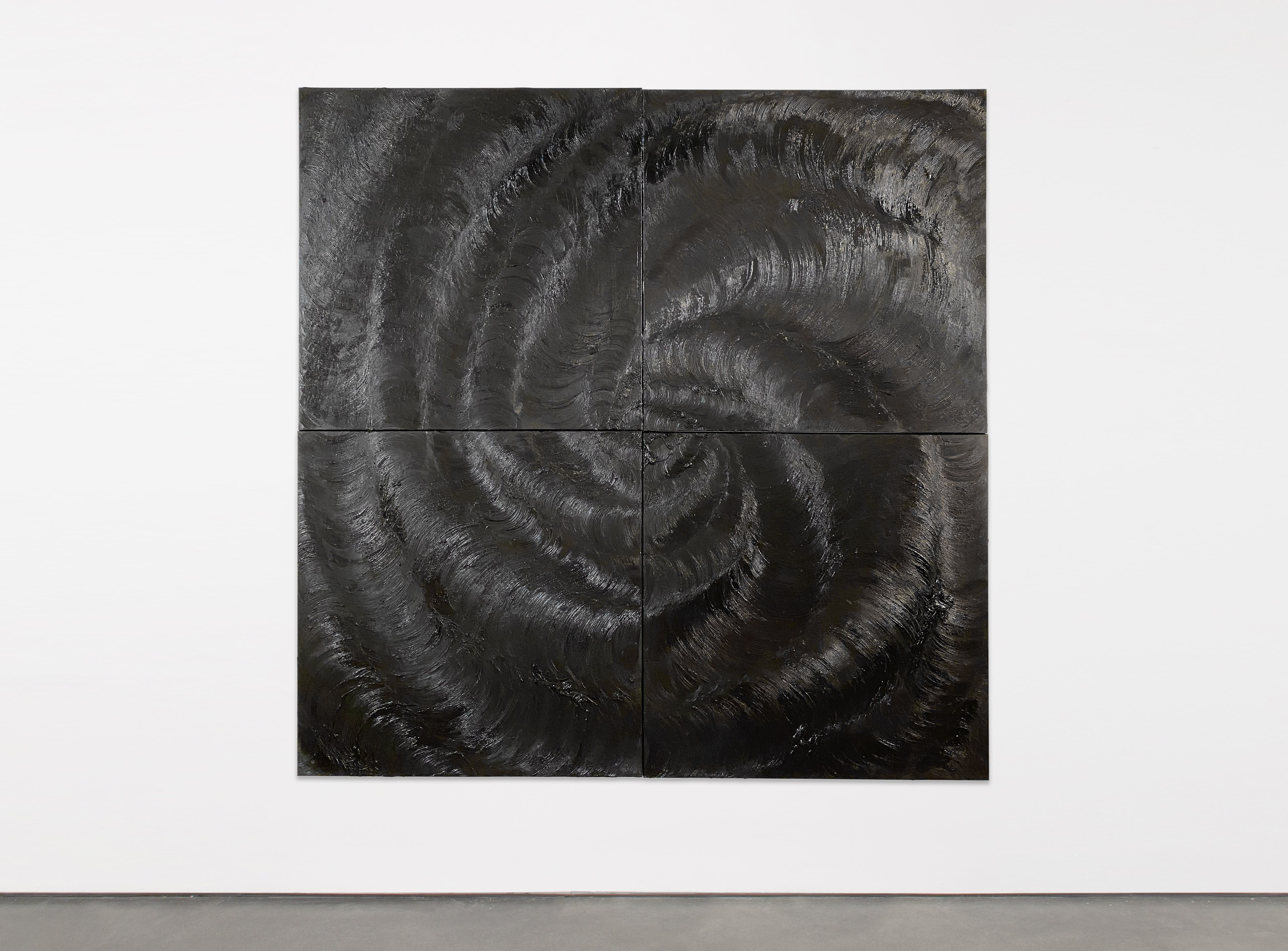
Ashanté Kindle views her practice as a form of personal healing as she focuses on celebrating the history and beauty of Blackness using abstraction. Kindle utilizes abstracted s-curl or wave forms that resemble both the natural texture of Black hair as well as cartography in her monumental canvases. Kindle is interested in these marks as a result of an interest in the grid and the notion of mapping hair when styling it in addition to the idea of mapping out alternative safe universes for Black people, as in music videos from the nineties. Repetition is an integral part of her process through its meaning in relation to her body, emotions, and occupancy of space as well as resulting in a record of the labor of Blackness. Kindle views these repeated marks as representing the echo of a soft whisper or hysterical scream of emotion. The artist obtained her BFA from Austin Peay State University and is currently an MFA candidate at the University of Connecticut.
"Each single mark I make holds a single action and thought but together they represent time and hold the toll that the labor to create has taken on my body. I want the viewer to see the visual representation of my personal history as well as a single interpretation of the beauty that comes from the labor of Blackness," the artists declares in this conversation with Jennifer Earthman. Ashanté Kindle describes her personal relationship with abstraction as a way in which to reflect on her identity as a Black woman. She also discusses the notion of abstraction as an inclusive place as well as a communicative tool.
In a few words, how would you describe abstraction?
I often think about abstraction as a place. Like a safe space where I get to the make and break the rules without judgement. Abstraction allows me to exist in my truest form outside of societal parameters that have historically deemed Blackness as problematic or undesirable. Abstraction provides the space to celebrate Blackness and make space for Black people.
What draws you to abstraction? What do you consider to be its relevance in today's world?
Abstraction gives me space and time to work and develop ideas on my own terms. I am able to communicate in ways that make sense to me. As someone who often tends to have trouble communicating my thoughts, abstraction allows me a way to communicate. I often think about the use of abstraction in Afrofuturism as a way to create alternate universes and safe spaces for Black bodies to exist freely in.

Ashanté Kindle. Ascension, 2020. Acrylic on canvas in 4 parts, 72 × 72 in (182.9 × 182.9 cm). Image courtesy of the artist and Zeit Contemporary Art, New York
Based on the evolution of abstraction, where would you say your work fits in the arc?
Unable to find many representations of myself and the way I am working in the history of abstraction until recently, I would say my work fits into the contemporary arc of abstraction based on the concepts and ideas I use to influence my work.
What is the importance of repetition in your abstraction and what do you hope to arouse in the viewer as a result?
Repetition exists as a visual representation of time, labor, and reflection in my work. I think a lot about how repetition affects the body physically and mentally over time. Where does the mind go when the body is repeating an action and where does the body go when the mind is reflecting? Each single mark I make holds a single action and thought but together they represent time and hold the toll that the labor to create has taken on my body. I want the viewer to see this toll as a visual representation of my personal history as well as a single interpretation of the beauty that comes from the labor of Blackness.
What brought about your desire to draw on cartography and hair; how do the two relate and converse in your work?
My interest in the grid led me in that direction. The grid exists as a solution to working larger. I also use the grid to relate to its uses in Black culture as well. I think about how mapping is utilized on the head through parting and styling and how grids are used in music videos of the 90s, especially by Hype Williams, to map out alternate universes for Black people to exist and be creative in.

